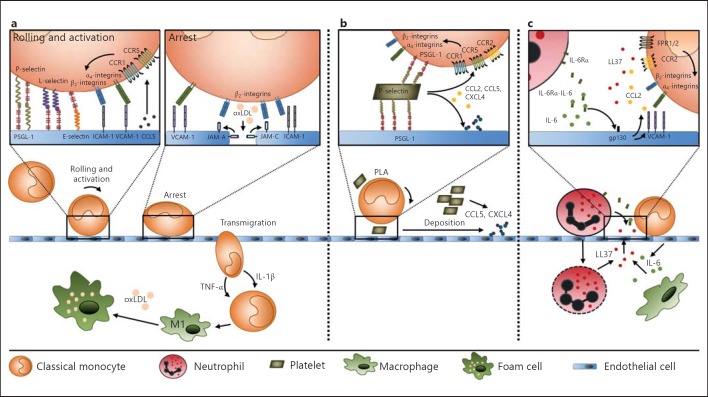Fig. 1.
Recruitment of classical monocytes in atherosclerosis. a Rolling of classical monocytes along atherosclerotic endothelium is primarily mediated by selectins and PSGL-1 but also by the interaction of α4- and β2-integrins with ICAM-1 and VCAM-1. Integrins on the cell surface of classical monocytes are further activated by binding of chemokines such as CCL5 to its receptors CCR1 and CCR5, thereby promoting firm adhesion of cells. Once emigrated, classical monocytes become macrophages and provide a cytokine milieu favoring M1-like macrophage polarization and, after uptake of oxidized low-density lipoprotein (oxLDL), transform into foam cells. b Platelets and classical monocytes can form aggregates (PLAs), thereby promoting tethering and slow rolling along the endothelium. Activated platelets secret several chemokines which are either deposited onto the endothelium or can directly activate classical monocytes via their respective receptors. c By releasing azurocidin (LL37/CRAMP), neutrophils mediate adhesion of classical monocytes to atherosclerotic endothelium via FPRs (FPR1/2). Another proposed mechanism is the shedding of IL-6Rα from neutrophils which forms complexes with IL-6 released from either macrophages or endothelial cells, thus inducing release of CCL2 and upregulation of VCAM-1 on endothelial cells.

